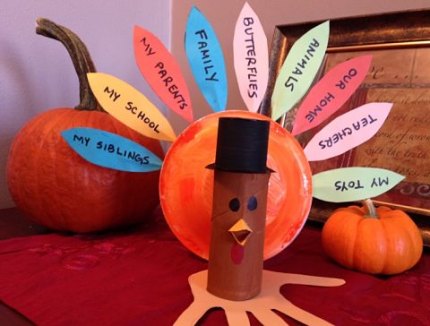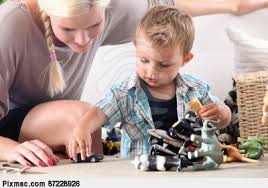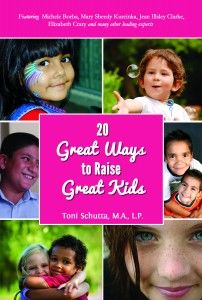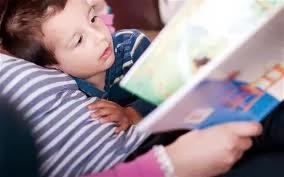
Grateful people are happy people according to research, but how can we teach gratitude to our children?.”No one is born grateful,” says life coach Mary Jane Ryan, author of Attitudes of Gratitude. It needs to be taught.
Here are five ways to teach them and five great crafts to instill this vital quality in your children
1. Be grateful yourself–talk to your kids every day about the little daily things you enjoy-dinner, a warm house, friends, trees, your job, a warm blanket a pet.
2. Create a daily dinnertime or bedtime tradition-let each one share one or two good things that happened that day.
3. Good manners and gratitude go together, so be sure to use the words “please” and “thank you” with children and insist that they use them too.
4. Insist that they help with household chores. A two year old can put away his plastic dishes and ‘silverware’ in a lower cupboard from the dishwasher, put her dirty clothes in the hamper. When they experience the effort, they’ll be more aware of all the work you do.
5. Insist on thank you notes. Even a preschooler can scribble on a card and you can add your own words or dictate a thank you note.
PICK ONE OR TWO OF THESE FUN IDEAS FROM TONI SCHUTTA, PARENT COACH, M.A., L.P. FOR INSTILLING GRATITUDE!
1. A thankfulness tablecloth. To make: Purchase a light-colored tablecloth and fabric markers. Wash the tablecloth and iron it before using. Invite your kids and every guest to write several things that they’re thankful for. Let the kids decorate the tablecloth with others creative ideas they have.
2. A Thankfulness turkey. This is a darling idea if you have a little time to create a turkey out of paper plates, construction paper and a toilet paper roll. Kids write something that they’re grateful for on each of the turkey’s feathers. http://mommypoppins.com/
3. Thankfulness place cards. This idea comes from the Family Education Network: Have your kids create place cards for each guest. Fold a small piece of tag board in half. Have yourchild write on each place card: “We’re thankful for you because…” Place a Thanksgivingsticker on each place card along with the name of the guest.
4. A blessing, prayer or poem. Either have your kids write a poem, blessing or prayer or if you’re comfortable, let them search the internet to find one that speaks to them and have them recite it at the start of the Thanksgiving meal.
5. Placemats: Using oversize construction paper in fall colors have your kids decorate each paper with words of thankfulness and drawings. Cover each sheet with clear contact paper to they can be used as Thanksgiving placemats year-to-year.













 My Mom and I went on vacation to Missoula July 22 to visit my sister who has a house in the woods by a creek, and a cabin on Flathead lake. We jump off the dock into the frigid water and swim like crazy till we turn into icicles.
My Mom and I went on vacation to Missoula July 22 to visit my sister who has a house in the woods by a creek, and a cabin on Flathead lake. We jump off the dock into the frigid water and swim like crazy till we turn into icicles.











